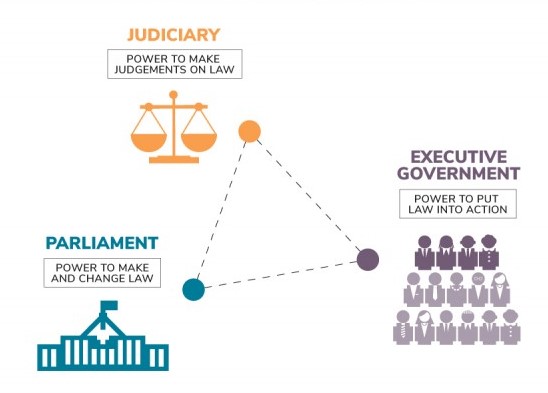JUDICIARY & POST RETIREMENT JOBS
2020 APR 27
Mains >
Constitution > Seperation of Powers > Judicial System

IN NEWS:
- The nomination of former Chief Justice of India, Ranjan Gogoi, to the Rajya Sabha has stirred a debate on the independence of the judiciary
NOMINATION TO RAJYA SABHA:
- The feature of nominating members to Rajya Sabha was adopted from the Irish constitution.
- The president nominates 12 members to the Rajya Sabha from people who have special knowledge or practical experience in art, literature, science and social service.
- The rationale behind this principle of nomination is to provide eminent persons a place in the Rajya Sabha without going through the process of election.
ARGUMENTS SUPPORTING:
- No explicit bar: The constitution states that a retired judge cannot plead or act in any court or before any authority within the territory of India. However, neither the constitution nor the other rules bar a judge from taking up other positions after their retirement.
- No cooling off period: Some administrative bodies have cooling off periods to eliminate the possibility or suspicion of a conflict of interest or quid pro quo. However, judiciary has no such provisions.
- Not the first time: There have been numerous instances of judges becoming part of the legislative & executive and vice versa. For e.g.: Former CJI P. Sathasivam was appointed the Governor of Kerala, CJI Hidayatullah became the Vice President of India and Js. V.R. Krishna Iyer became a Supreme Court judge after being a minister in Kerala’s Communist Party government.
- Statutory requirements: Several laws mandate the appointment of judges in certain positions. Qualifications for some positions, such as heads of NHRCs and tribunals, explicitly state that they should be retired Chief judges. Considering the shortage of judges in India, appointments immediately after their retirement is the only way left to fill vacancies in such institutions.
- Improves quality of debate: The presence of legal luminaries can greatly improve the quality of debates and the scrutiny of legislations in the Rajya Sabha.
- No political allegiance: The nominated members are not members of any party and are hence not subject to party whips. They are free to act, without fear of repercussions.
- Efficient use of experience: Compared to other democracies, Judges in India retire at a relatively younger age of 65. Post retirement appointments ensure that their experience is put to good use.
ARGUMENTS OPPOSING:
- ‘Quid pro quo’: Critics are of the view that Pre-retirement judgments are influenced by a desire for a post-retirement job. They argue that the immediate appointments suggest that decisions regarding their post-retirement assignments had already been taken, at least in principle, by the respective governments even during the tenure of the judges.
- Questions credibility of judgements: Immediate post-retirement appointments of the judges create a cloud over the sanctity of their judgments, irrespective of their merits.
- Loss of trust: The faith of the people is the bed-rock on which the edifice of judicial review and efficacy of the adjudication are founded. Erosion of credibility of the judiciary in the public mind, for whatever reasons, is the greatest threat to the independence of the judiciary.
- Violates separation of power: appointments of persons who have held constitutional office in judiciary to the executive and legislatives goes against the clear demarcation of separation of powers.
WAY FORWARD:
- Completely barring post retirement appointments: Law can be brought forth, either by way of a constitutional amendment or a parliamentary enactment, barring such appointments. Also, the age of retirement for judges can be increased by a year or two. Judges can be compensated by being given their last drawn salary as pension.
- Provide for mandatory cooling off period: A mandatory cooling off period of over 5 years can ensure that the government will not be able to influence judgements through plush post-retirement postings.
- Adopt British model: In Britain, every judge of the Supreme Court has the right to sit in the House of Lords for the rest of their life. If nomination is made automatic upon retirement and the tenure 10 years, there is no scope for doubting the independence of such members in the Rajya Sabha.
PRACTICE QUESTION:
Q. Do you think post retirement appointment of judges poses a threat to the principle of separation of power in India. Support your argument with examples?
